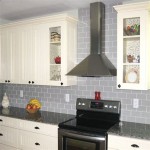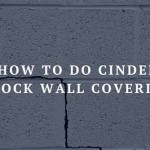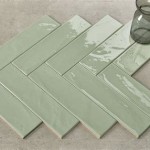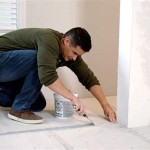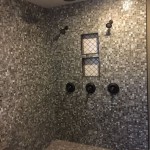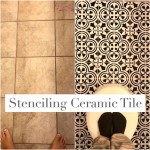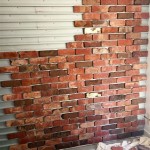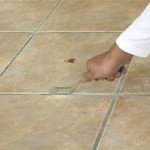What Is The Best Backer Board For Tile In A Shower?
Selecting the appropriate backer board is a crucial step in any shower tiling project. It provides a stable, water-resistant substrate for the tile, ensuring the long-term integrity and aesthetics of the shower. The market offers various types of backer boards, each with its own set of properties, advantages, and disadvantages. Understanding these differences is essential for making an informed decision that aligns with project requirements and budget considerations.
The primary function of backer board in a shower environment is to protect the wall framing from moisture penetration. Showers are inherently wet environments, and water seeping behind the tile can lead to mold growth, wood rot, and structural damage. A properly installed backer board creates a barrier, mitigating these risks and extending the lifespan of the shower.
Moreover, backer board provides a suitable surface for tile adhesion. It offers a rough texture that allows thin-set mortar to bond effectively, ensuring that the tiles remain securely in place. The rigidity of the backer board also contributes to the overall stability of the tiled surface, preventing cracking and movement.
Cement Board
Cement board is a common choice for shower backer board due to its excellent water resistance and durability. It is composed of cement, reinforced with fiberglass mesh, creating a strong and stable substrate. Cement board is available in various thicknesses, typically ranging from ¼ inch to ½ inch, with the ½ inch thickness generally recommended for shower installations to provide optimal rigidity.
One of the key advantages of cement board is its resistance to mold and mildew. It does not contain organic materials that can support microbial growth, making it a suitable choice for moisture-prone environments. Its robust composition also makes it resistant to rot and decay, ensuring its longevity in the shower.
Furthermore, cement board is relatively easy to work with. It can be cut using a scoring knife and snapped, similar to drywall. However, it is denser and heavier than other types of backer board, which can make installation more challenging. It also produces a significant amount of dust when cut which requires proper safety measures like wearing a mask and working in a well-ventilated area.
When installing cement board, it is crucial to use alkaline-resistant mesh tape and thin-set mortar to seal the seams. This step is essential to prevent water from penetrating behind the board. Screws specifically designed for cement board should be used to fasten the board to the wall studs, ensuring a secure and lasting installation.
There are various brands of cement board available, each with slightly different formulations and characteristics. Some popular brands include Durock, HardieBacker, and WonderBoard. While the specific properties may vary, they all generally offer good water resistance and durability, making them reliable options for shower installations.
The cost of cement board is typically moderate, making it an accessible option for many homeowners. While it may be slightly more expensive than some other types of backer board, its durability and water resistance make it a worthwhile investment in the long run.
Fiberglass-Reinforced Gypsum Backer Board
Fiberglass-reinforced gypsum backer board, often referred to by the brand name DensShield, offers another viable option for shower installations. This type of backer board consists of a gypsum core reinforced with fiberglass matting, providing inherent water resistance. The fiberglass matting on both sides of the board makes it less susceptible to water damage compared to standard gypsum board.
A distinct advantage of fiberglass-reinforced gypsum backer board is its ease of installation. It is lighter and easier to cut than cement board, making it a convenient choice for DIYers. It can be cut with a utility knife and requires fewer specialized tools. This can lead to faster installation times and reduced labor costs.
Furthermore, some fiberglass-reinforced gypsum backer boards come with a built-in moisture barrier. This eliminates the need for a separate waterproofing membrane, streamlining the installation process and potentially saving time and money. However, it is important to verify that the specific product being used has the required waterproofing properties for shower applications.
Despite its ease of installation, fiberglass-reinforced gypsum backer board is still durable and water-resistant. The fiberglass matting provides added strength and protection against moisture penetration. It is also resistant to mold and mildew growth, making it a suitable choice for shower environments.
However, it is important to note that fiberglass-reinforced gypsum backer board may not be as impact-resistant as cement board. It is more susceptible to damage from dropped objects or heavy impacts. Therefore, it is crucial to handle it with care during installation and to protect it from potential damage.
The cost of fiberglass-reinforced gypsum backer board is generally comparable to that of cement board. While it may be slightly more expensive than some other options, its ease of installation and built-in moisture barrier can offset the cost difference.
Extruded Polystyrene (XPS) Foam Backer Board
Extruded polystyrene (XPS) foam backer board is a lightweight and waterproof option for shower installations. It consists of a rigid foam core faced with a reinforced coating, providing a stable and water-resistant substrate. This type of backer board is becoming increasingly popular due to its ease of use and excellent performance.
One of the key advantages of XPS foam backer board is its exceptional water resistance. The closed-cell structure of the foam prevents water absorption, making it completely waterproof. This eliminates the need for a separate waterproofing membrane, saving time and money during installation.
Another significant benefit of XPS foam backer board is its lightweight nature. It is significantly lighter than cement board or fiberglass-reinforced gypsum backer board, making it easier to handle and install. This can be particularly advantageous for DIYers or for projects where weight is a concern.
Furthermore, XPS foam backer board is easy to cut and shape. It can be cut with a utility knife or a saw, allowing for precise cuts and intricate designs. This makes it a versatile choice for showers with unusual shapes or configurations.
However, XPS foam backer board is typically more expensive than other types of backer board. While its ease of installation and waterproof properties can offset the cost difference in some cases, it may not be the most budget-friendly option for all projects.
When installing XPS foam backer board, it is crucial to use a compatible thin-set mortar and fasteners. The manufacturer's recommendations should be followed closely to ensure proper adhesion and a secure installation. Special screws or washers designed for foam backer board are often required to prevent the fasteners from pulling through the foam.
While XPS foam backer board is waterproof, it is important to properly seal the seams and corners to prevent water from penetrating behind the board. Specialized seam tape and sealant designed for foam backer board should be used to create a watertight seal.
Popular brands of XPS foam backer board include Schluter Kerdi-Board and Wedi Fundo. These brands offer a range of sizes and thicknesses to suit different project requirements. They are known for their high quality and reliable performance.
In addition to its use as a backer board, XPS foam can be used to create sloped shower pans. Pre-sloped pans made of XPS foam simplify the process of creating a properly sloped shower floor, eliminating the need for traditional mortar beds.
The choice of backer board is ultimately dependent on a variety of factors, including budget, skill level, and project requirements. Each type of backer board offers its own set of advantages and disadvantages, and the optimal choice will vary depending on the specific circumstances.
Proper installation is paramount, regardless of the type of backer board chosen. Following the manufacturer's instructions and adhering to best practices will ensure a successful and long-lasting shower installation. Furthermore, local building codes and regulations should be consulted to ensure compliance.
Consider consulting with a qualified tile contractor or building professional to obtain expert advice on selecting and installing the appropriate backer board for the specific shower project.

Tile Backerboard Material Options Fine Homebuilding

Diy Guide To Choosing And Installing Shower Tile Backer Board

Tile Backer Board Breakdown Which One Is Best For Showers Diytileguy

Diy Guide To Choosing And Installing Shower Tile Backer Board

The Best Way To Waterproof Your Shower Before Tiling Inspired Hive

What Is The Best Backer Board For A Shower

Tile Backer Board Installation Key Steps For A Quality Armchair Builder Blog Build Renovate Repair Your Own Home Save Money As An Owner

X Treme Tile Backer Board Mcdaids Bathroom Tiles

Benefits Of Tile Backer Boards In A Wetroom Ccl Wetrooms

The Pros And Cons Of Various Tile Backers Family Handyman
Related Posts

